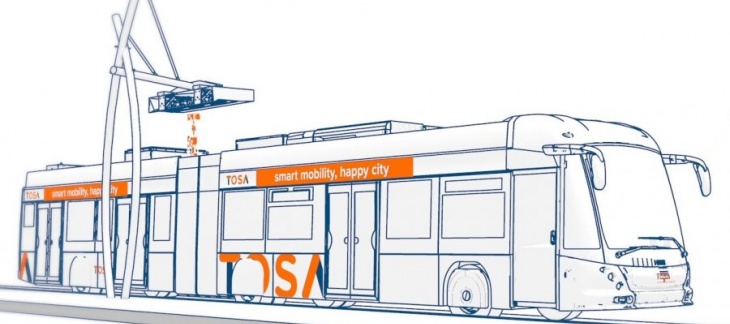
There are three types of recharging stations:
- Flash feeding stations – FFS
- Terminal feeding stations – TFS
- Depot feeding stations – DFS
Flash feeding stations are used for partially recharging the on-board batteries for around 20 seconds, i.e. the time it usually takes to pick up or set down passengers at bus stops. They contain a storage module that can limit peaks of electrical consumption.
This module is made up of lithium ion batteries (LIB), chosen for their considerably smaller volume and lower cost. These batteries have been designed with a large storage capacity of 88 kWh, which is more than sufficient to supply full power whilst maintaining sufficient reserves to handle a bus train (one bus that follows another).
This charge/discharge cycle affords an estimated service life of 10 years for the LIB module of the flash feeding stations. To ensure optimum battery performance, the temperature within the energy storage module needs to be maintained below 45°. A water cooling system has therefore been investigated to maximise the service life of the batteries.
The level of noise generated outside the cabinet by the air-conditioning, air/water exchange and ventilation systems has been carefully examined in order to maintain the level of noise emissions well below the legal limits stipulated in the Swiss Noise Abatement Ordinance (OPB RS 814.41).
The role of the terminal feeding stations is to fully charge the vehicles’ batteries while they are stationed at the end of the line (four to five minutes) awaiting their next departure. Given the high utilisation rate (very brief intervals between each recharge), these stations are not equipped with an energy storage module (such as batteries, supercapacitors, etc.) that could reduce the connection power. The latter is 436 kVA, offering an output power of approximately 400 kW.
The infrastructure of the flash and terminal feeding stations is supplemented by a recharge bracket which is over seven metres tall and supports a rail for connecting the vehicles’ automatic articulated arm. This rail, located 4.5 metres above street level, is used for transferring energy between the electric cabinets and the buses’ batteries. When no arm is connected to the rail, there is no electrical current in the bracket or the rail, thereby ensuring total security. As energy is transferred by contact, it does not generate any electromagnetic fields, unlike other energy transfer technologies such as induction.
